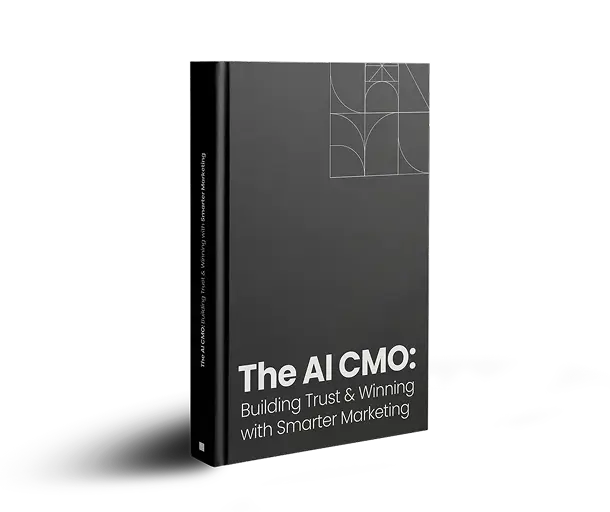
Highlights
- Dropping context between discovery and demo kills momentum.
- Broken SDR-to-AE handoffs erode buyer trust.
- Over-automation or lack of personalization weakens engagement.
- Misaligned sales and marketing leaves AEs undersupported.
Introduction
What happens after a lead becomes “sales qualified” is just as important, if not more, than what happens
before. Too often, companies celebrate SQL as if it were the finish line, when in reality it’s just the
beginning of the most delicate stage of the buyer journey. A single misstep, whether it’s a sloppy handoff, a
generic demo, or a lack of consistent follow-up, can stall momentum and kill even the most promising deals.
In this roundup post, 12 thought leaders share their perspectives on the biggest mistakes companies make once a
lead is sales qualified and what causes deals to die in the pipeline. Their insights highlight common pitfalls
and practical ways to prevent SQLs from slipping away.
Here’s Our Expert Panel
- Tara McGillicuddy
- Abby Roberts
- Stefan Komlos
- André Solomon
- Martin Lerda
- Jason Mashak
- Anuradha Wadhwani
- Vicki Apodaca
- Todd Hagopian
- Joy Gendusa
- Krysta Cathey
- Kevin Payne
#1 Tara McGillicuddy

One of the most common and costly mistakes companies make after a lead becomes qualified… is failing to carry
forward the value uncovered during the discovery call into the demo experience. Too often, discovery is treated
as a checkbox activity rather than a strategic opportunity to understand the customer’s pain, upcoming
initiatives, and success metrics. Then, when it’s time for the demo, the SME or solution consultant walks in
cold— armed with features but not context. This results in a generic one-size-fits-all demo that misses the
mark. If the customer doesn’t see how the solution solves their specific problem, the momentum stalls.
Author Bio
Tara McGillicuddy is a Senior Enablement Instructional Designer at ESO who specializes in sales enablement and
instructional design for customer-facing teams. You can connect with Tara over LinkedIn.
#2 Abby Roberts

The biggest mistake companies make is treating their marketing-to-sales pipelines overly mechanistically,
creating trust and communication breakdowns between marketing and sales teams at handover. Leads aren’t widgets,
and pipelines aren’t conveyor belts on a factory floor moving smoothly from one area to the next. So, for sales
to follow up on promising SQLs, they need to believe that SQLs are worth their time in the first place. The only
way to do that is through regular human interaction and trust-building between teams.
Author Bio
As the former Head of Datasite Insights and Global Editor of Mergermarket, Abby Roberts has over 20 years of
experience in creating data-driven research and storytelling. Her expertise lies in filling commercial funnels,
informing product roadmaps, and opening C-suite doors. Keep up with Abby over LinkedIn.
#3 Stefan Komlos

The biggest mistake I see is companies relaxing the moment a lead is marked as “sales qualified.” It’s almost
like they think the finish line has been crossed, when in reality the relationship is still fragile. What
usually happens next is a sudden tone shift — the discovery calls that felt personal and curious get replaced by
canned pitches and a rush to close. That’s where deals go to die. Buyers don’t walk away because the product
isn’t good; they walk away because the trust they were starting to feel disappears. The through-line has to be
consistency. The same listening, attention, and human touch that earned the lead needs to carry through the
entire sales process. If the handoff feels seamless, momentum builds. If it feels like a switch, momentum dies.
Author Bio
Stefan Komlos is a community and brand strategist with over a decade leading engagement and marketing
strategies in the video game industry. He is the author of Community 3.0: The End of the Engagement Trap, a book
on building loyal communities that last. He helps organizations connect authentically with audiences at the
moments where trust matters most. You can connect with Stefan on LinkedIn.
#4 André Solomon

One of the most common — and costly — breakdowns in the sales process happens during the SDR → AE handoff.
Here’s the pattern I see: The SDR invests time building rapport and securing a meeting. The prospect arrives
expecting continuity. Instead, the AE enters cold — and the SDR is nowhere to be seen. The prospect feels misled
or “handed off,” and trust is weakened. This moment, while small, often derails otherwise strong opportunities.
A best practice I recommend is to make the handoff a designed experience: The SDR joins the initial call. They
introduce the AE in a natural, trust-transferring way. Once rapport is established, the SDR steps out, leaving
the AE to deepen discovery. This simple shift prevents drop-off, preserves momentum, and signals professionalism
to the buyer.
Author Bio
Andre is a seasoned sales enablement professional with over 11 years of experience. He views enablement as the
art of bringing people together, building clarity, and guiding teams to succeed. His philosophy is rooted in
enabling, not enforcing — empowering people with the tools, skills, and confidence they need to deliver real
business impact. Get in touch with Andre over LinkedIn.
#5 Martin Lerda

For me, what kills deals is the wrong balance between automations and personalized follow-up. In some cases,
there’s too much automation and the real 1:1 follow-up gets lost, which makes the prospect lose interest. But at
the same time, the lack of automated follow-up leaves the correct tracking entirely up to the salesperson and,
in cases where they handle a high volume of deals, they tend to prioritize the ones they trust the most or the
biggest ones—leaving many other deals to die as well.
Author Bio
Martin Lerda is the Outbound Marketing Manager at Atom and an Outbound & AI Strategist in B2B marketing. He
builds scalable, data-driven outbound programs and AI-enabled workflows to drive pipeline and revenue growth.
Stay connected with Martin over
LinkedIn.
#6 Jason Mashak

One of the biggest mistakes companies make after a lead becomes ‘sales qualified’ is assuming Marketing’s job is
done after handing the MQL to Sales. AEs can be left without the right ROI arguments needed for ever-larger
buying committees. Without knowing when to use the right case studies, customer references, or third-party
validation, opportunities can fade away. Marketing and Sales must stay in close communication throughout the
entire funnel, from new lead to close. By continuous alignment in supporting AEs, Marketing can help ensure that
opportunities don’t die out due to weak value articulation for budget holders, procurement teams, etc.
Author Bio
Jason Mashak is Director of Marketing & Communications at Whalebone.
He is recognized for corporate communications, revenue marketing, digital transformation, change management, and
improving effectiveness and efficiency across teams. You can connect with Jason over
LinkedIn.
#7 Anuradha Wadhwani

Assuming sales can pick things up cold from the hand-off can be a costly mistake. For example – a prospect
accesses an ROI calculator for APAC, but sales calls them with a generic US case study. That mismatch can kill
momentum that’s building up. Another mistake, particularly in high-consideration solutions or products, is
pushing too hard, too fast. Treating a qualified lead like they’re “ready to buy today”. Example: a software
vendor gets a demo booked and immediately starts chasing for signature within a week. The buyer still needs to
line up IT and finance approvals, and the pressure can make them stall or ghost altogether.
Author Bio
Anuradha Wadhwani is a Senior Digital Marketing Strategist specializing in demand generation, lead generation,
and product messaging. You can follow Anuradha’s work over LinkedIn.
#8 Vicki Apodaca

The single biggest mistake companies make is asking a lead to marry them before dating. B2B is
relationship-driven, and asking for a full commitment too soon will often lead to a dead lead or hurt a
relationship (both short-term and long-term). Building a relationship with your lead prevents you from giving a
generic pitch or leading the conversation without a focused purpose. This, in turn, shows the lack of
relationship being built and makes your lead feel like there is a lack of effort (because there is!). Your lead
is the key to doing your research; work with them directly and build your narrative around what they’re telling
you. Once you know their exact needs, you can use this information to empower you to close a deal.
Author Bio
Vicki Apodaca is the Founding CMO at SendTurtle, a startup advisor, and the founder of NM Tech Talks. As a full
stack marketer and strategic leader, she specializes in go-to-market and marketing strategy for Pre-Seed and
Seed-stage tech companies.Get in touch with Vicki on LinkedIn.
#9 Todd Hagopian

The most damaging mistake companies make after qualifying a lead is maintaining rigid rules that prevent their
teams from addressing customer-specific concerns during crucial closing conversations. “The deal dies in the
details”—when prospects present their particular problems, inflexible firms force standardized solutions onto
diverse deals, causing qualified buyers to bail because their unique concerns can’t be addressed. The solution
involves implementing what we call “Inbound Accelerators”—empowering sales teams to offer one significant
concession per prospect (whether pricing parameters, payment periods, or lead-time limitations) while
maintaining margin maximums. Find the “One Move That Makes The Money”—this means providing your people a toolkit
of pre-approved powers they can deploy based on specific sales situations, rather than requiring redundant
reviews for any deviation from standard structures. This approach demands deliberate development to ensure teams
understand which concession categories work best for different customer clusters and how to identify the minimum
move necessary to close each deal. The results of this shift show stunning. your core team will spend less time
crafting unique offers, your sales team will get more sales “in the meeting” instead of days/weeks later. your
customers will feel like they got a deal, even though you had already mapped it out. Your close rate will rise,
your margins will stay under control, your team will focus more time on what matters, and surprisingly,
“Precision Pays Better Than Panic”—average profitability often improves because salespeople become surgical with
their selections rather than defaulting to desperate discounts. The key insight cuts to the core: “rigidity
ruins more revenue than flexibility forfeits”—the deals you destroy by being inflexible cost far more than the
margin morsels you might sacrifice through strategic solutions.
Author Bio
“Todd Hagopian is an authority on Corporate Stagnation Transformation and has transformed businesses for
divisions at Berkshire Hathaway, Illinois Tool Works, and Whirlpool Corporation. He has sold over $3 billion of
products to major retailers, has been featured in outlets like Fox Business and AON, and online at outlets like
Forbes and Manufacturing Insights Technology. Hagopian holds an MBA from Michigan State University. Network with
Todd over LinkedIn.
#10 Joy Gendusa

The biggest mistake companies make once a lead becomes sales-qualified is leaving it 100% in the hands of sales.
Marketing and follow-up have to continue indefinitely, and it has to be automatic — you can’t rely on your sales
team to manually reach out to every lead until they close. That might have been the way it worked eons ago, but,
at scale, it’s completely unworkable today. Your marketing department should create a comprehensive sales funnel
that follows up automatically with a lead, from initial inquiry to close. (And ideally beyond that!) Your
follow-up should include every lead on every channel: on their social media feeds, on their favorite websites,
in their inbox with conversational subject lines that really grab attention, and especially at home in the
mailbox with a tangible piece of mail that’s guaranteed to cut through the digital clutter to make a meaningful
impression. This is one tactic we’ve found that really pulls leads closer to closing — it’s a personalized
postcard from the sales rep after they tried to call. It’s just a quick message, something like, “I tried to
reach you but we keeping missing each other. Let’s discuss your campaign in depth soon!” We used to send these
manually, but now they can be triggered automatically in our CRM with just a click. These personal touches
really stand out when people are on their 57th email of the day, and it’s been a great help to our close rates.
Author Bio
Joy Gendusa is the founder and CEO of PostcardMania, a $119 million marketing firm. She is an expert in
multi-channel marketing. You can follow along with Joy over LinkedIn.
#11 Krysta Cathey

The biggest mistake is letting momentum die. Too many companies lack a strong follow-up process, treating it like a box to check instead of a strategic, personalized effort. Effective follow-up means understanding the lead’s unique pain, priorities, and timing, and THEN tailoring every touchpoint around that. If follow-up is generic or slow, it doesn’t matter how promising the deal is, it’ll stall.
Author Bio
Krysta Cathey is Head of Sales and Enablement at Noteable, where she builds scalable sales systems and growth-focused GTM strategies. You can connect with her on LinkedIn.
#12 Kevin Payne

From my experience, poor sales management is the biggest issue that causes promising deals to die in the pipeline. In my 37+ year career in marketing management, I can count the number of great sales leaders on one hand, with about three fingers left over. Often there’s no agreement about what “sales qualified” means. Have they met the BANT criteria that most companies use or is it just a sales rep being optimistic (and unrealistic)? The two best sales leaders I worked with closely managed the sales pipeline. They monitored the progression of each deal closely. When a deal got to a “commit” stage, the leader asked for a firm date and immediately dealt with any potential issues that could lose the deal. If a sales rep blew by the commit stage, they were called on it and held accountable. But, too many times, that wasn’t the case. In one situation, we had a sales rep that said a deal would close in September. September came and went. So did October, November and December. The sales leader asked about it but never forced the sales rep to be accountable. Before we knew it, it was September again and the “deal” still hadn’t closed. Making it worse, marketing wasn’t given any insight into what was holding it up, preventing us from trying to help.
Author Bio
Kevin Payne spent 37 years in corporate marketing, brand development, lead generation programs and strategic planning at startup and mid-sized companies. He led teams and was also a “one man marketing band.” Kevin specialized in creating competitive differentiation through the use of content marketing and integrated communications programs. He has broad expertise in lead generation, branding, messaging, collateral, PR, trade shows/events, website marketing, e-marketing, media and analyst relations. He successfully developed/repositioned corporate identity and brand, and created new market opportunities. Kevin recently published “Marketing Physics” – a memoir about his career in tech marketing in Silicon Valley. The book includes 37 Lessons Learned about marketing and management. The book is available as a paperback or digital version on Amazon. You can connect with Kevin on
LinkedIn.
Conclusion
The message from these 12 experts is clear: SQLs don’t close themselves. Deals die when companies assume momentum will carry through automatically. Protecting pipeline health requires continuity, alignment, personalization, and flexibility at every stage. The most successful organizations don’t just hand off leads, they hand off trust, context, and momentum.
Our blog
Latest blog posts
Tool and strategies modern teams need to help their companies grow.

Turn your owned channels into a precision account-based marketing (ABM) engine that w...

In this article, we’ll explore how AI-driven content, AI lead scoring, and AI-drive...

Marketers often confuse drips vs nurtures, but each plays a distinct role in B2B emai...






